
what you'll learn...
overview
In this, the following are explained.
• proper fraction: smaller than a whole and properly a fraction of a whole
• improper fraction: larger than a whole in fraction form
• mixed fraction: larger than a whole given as mix of a whole number and a fraction
mixing proper and improper
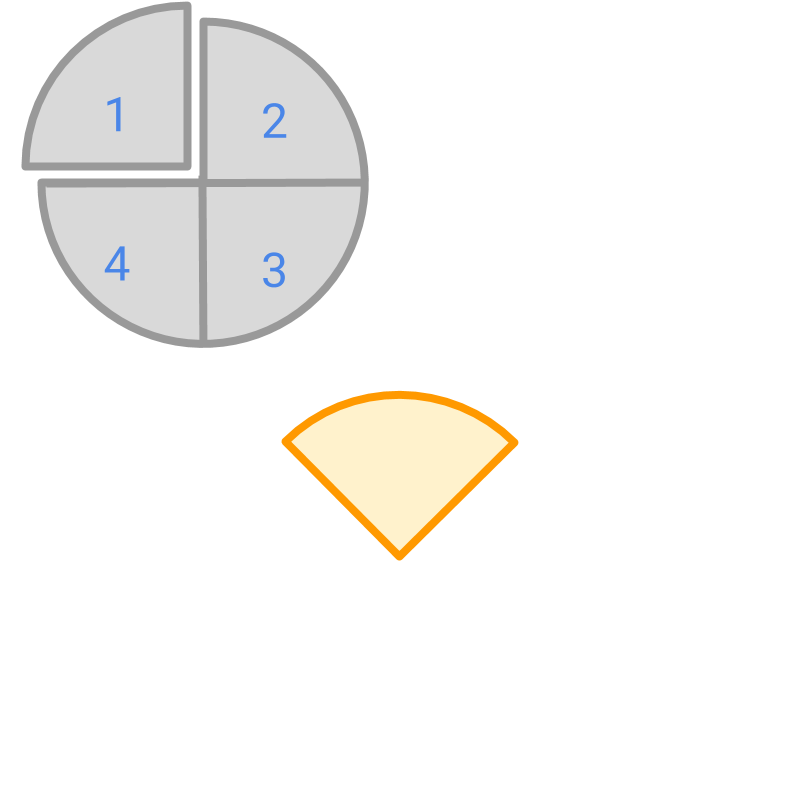
Consider the given figure. The colored part is the representation of a fraction and the gray part is shown only as a representation of the whole.
The fraction is .
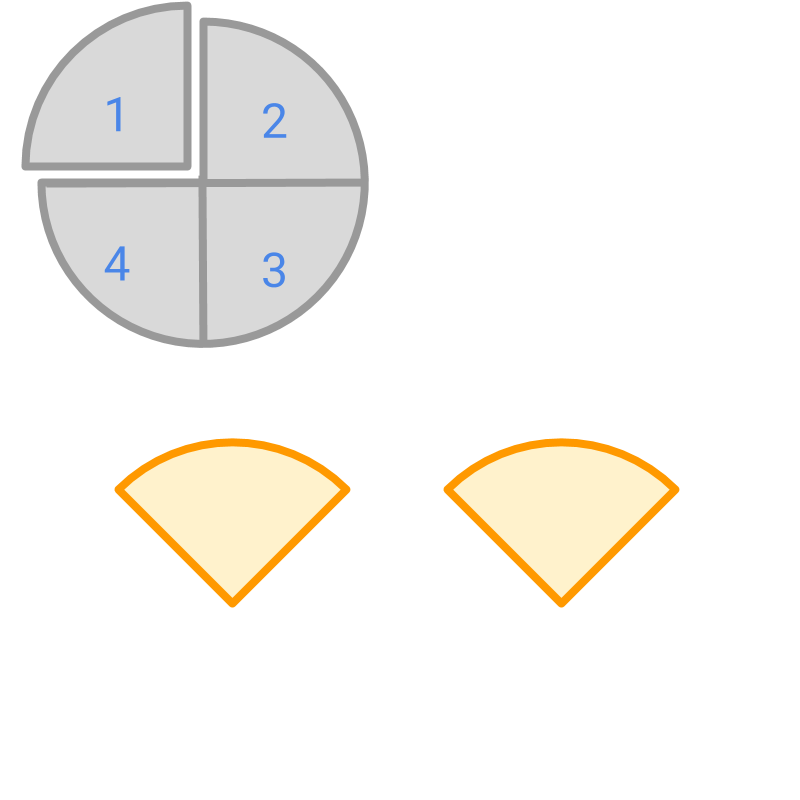
The fraction represented by the colored part in the given figure is
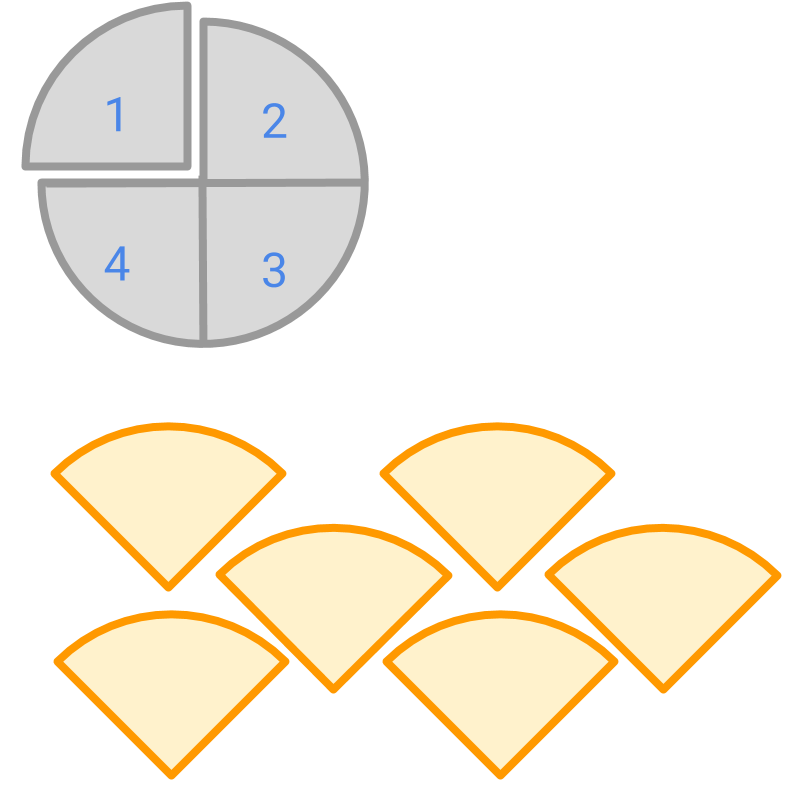
The fraction represented by the colored part in the given figure is
The picture represents the fraction . Number of parts in the given fraction:
Number of parts making a whole:
The number of parts in the given fraction is greater than the number of parts making a whole.
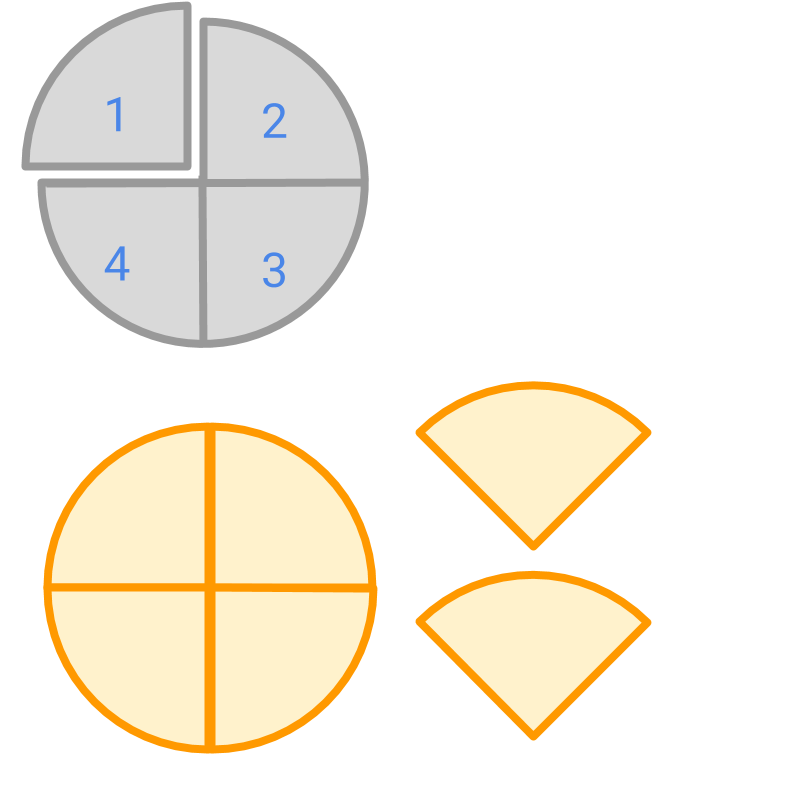
The picture represents the fraction . The parts of the given fraction is rearranged to make a whole and remaining parts are shown nearby. So, can be given as .
naming them
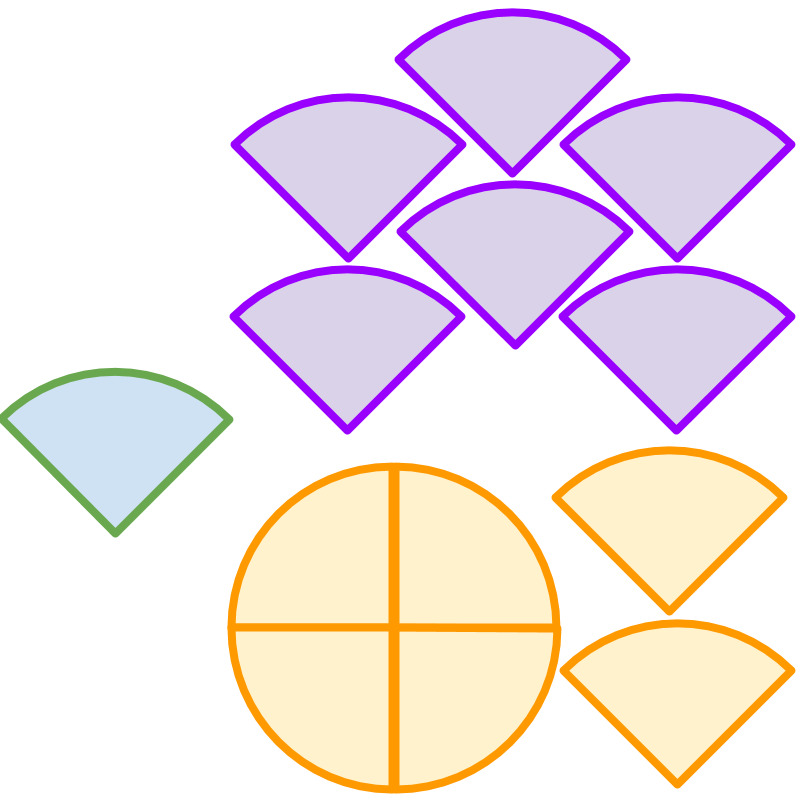
The picture represents three fractions
• Fraction given by green part:
• Fraction given by purple parts :
• Fraction given by orange parts :
The word "fraction" means "part of a whole".
• In the three given fractions, only is strictly part of whole. The value of the fraction is less than , which is properly part of whole. Such fractions are called proper fractions.
• The fraction is greater than , and is represented as numerator by denominator. Such fractions are called improper fractions.
• The fraction is greater than , and is represented as a whole number along with a fraction. Such fractions are called mixed fractions.
The word "proper" means: required or correct type. Proper fractions are fractions that are smaller than a whole and properly a fraction of a whole.
The word "improper" means: not of correct type. Improper fractions are fractions that are larger than a whole.
The word "mixed" means: consisting of different quantities or elements. Mixed fractions are fraction that have an integer count of whole and a proper fraction.
Proper Fraction: number of parts in the fraction (numerator) is less than the number of parts making a whole(denominator) given as numerator divided by denominator. Proper fractions are less than 1.
Improper Fraction: number of parts in the fraction (numerator) is greater than the number of parts making a whole(denominator) given as numerator by denominator. Improper fractions are greater than 1 given as numerator by denominator.
Mixed Fraction: Specified as number of wholes with a fraction. Mixed fractions are greater than 1 and given as whole number followed by a numerator by denominator.
examples
What type of fraction is ?
The answer is 'proper fraction'.
What type of fraction is ?
The answer is 'improper fraction'.
What type of fraction is ?
The answer is 'mixed fraction'.
What type of fraction is ?
The answer is 'mixed fraction'.
summary
» Proper Fraction
→ fraction is smaller than the whole
→ eg:
 » Improper Fraction
» Improper Fraction
→ fraction is larger than the whole
→ eg:
 » Mixed Fraction
» Mixed Fraction
→ a whole number and a fraction given together
→ eg:

Outline
The outline of material to learn "fractions" is as follows.
• click here for detailed outline of Fractions
→ Part of whole
→ Dividing a group
→ Fractions as Directed numbers
→ Like and Unlike Fractions
→ Proper and Improper Fractions
→ Equivalent & Simplest form
→ Converting unlike and like Fractions
→ Simplest form of a Fraction
→ Comparing Fractions
→ Addition & Subtraction
→ Multiplication
→ Reciprocal
→ Division
→ Numerical Expressions with Fractions
→ PEMA / BOMA